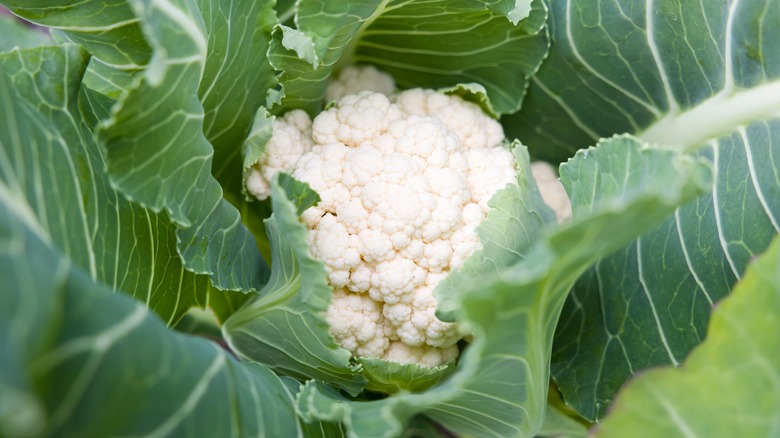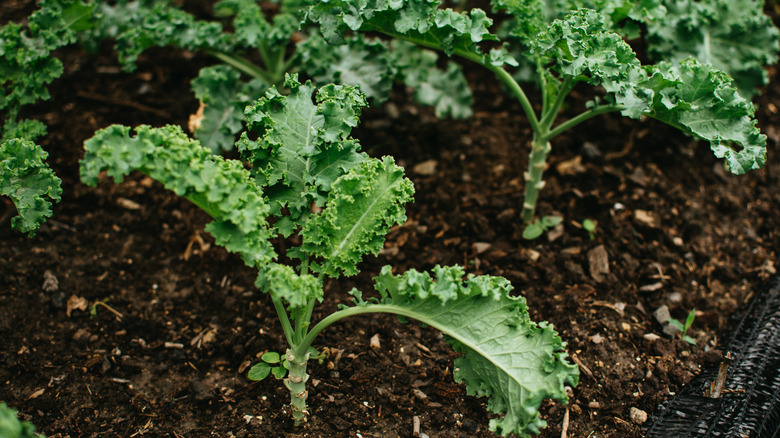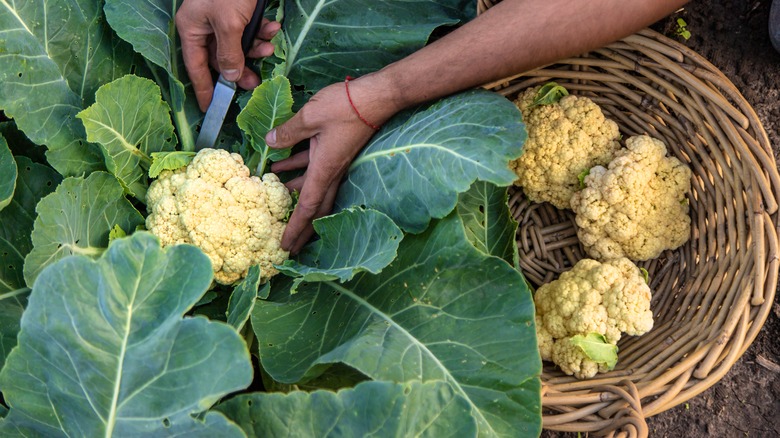Don't Plant This Common Garden Vegetable Next To Cauliflower. Here's Why
Unlike many popular vegetable seedlings that thrive in warmer climates, cauliflower is the type of plant that grows best in the spring. Seedlings are planted two to three weeks before the last frost (late March to early April, depending on where you live) and are ready to harvest in a short 50 to 75 days. With such a small window of growth, it only makes sense that you would want to make the most of your garden space and grow similar crops at the same time. Unfortunately, not every crop thrives growing next to a patch of cauliflower, such as kale.
Planting two crops in close proximity is known as companion planting, a practice that gardeners use to save space, improve their yield, and reduce pest pressure. Certain plants can grow well next to each other, and others don't, depending on how much space a plant needs to thrive or the types of pests it may attract. Cauliflower is a great companion plant for mint, but it doesn't grow well next to kale. Here's a deeper look at why these two plants can't grow side-by-side.
Why you should never plant kale next to cauliflower
Kale and cauliflower are both part of the brassica family plant genus, which means that they have very similar needs: full sun exposure, mildly acidic soil (though they tolerate mildly alkaline), good drainage, and constant moisture. However, similar care does not mean these plants work well growing next to one another. Because they have identical needs, the plants will compete for the same resources to thrive, which may cause slower growth and poor crop results. The differences in the way they grow also don't help — cauliflower grows lower to the ground and spreads wide, while kale leaves grow tall. This means crops around the kale will end up in the shade. While this may be beneficial for sun-sensitive crops, cauliflower also needs to be drenched in the sun, so the crop won't grow as well.
Plant these crops at opposite ends of your garden, as they will thrive best with lots of space between them. If you're working with a smaller garden bed, leave at least 18 to 24 inches between crops. To avoid overcrowding your cauliflower crop, each seedling will need at least 12 to 18 inches of space between each, and each row should sit 2 to 3 feet apart. Cauliflower is one of the plants you should start growing in late winter to set your garden up for success.
Similar crops, like kale, can attract insects to your cauliflower
When a plant is sick or weak, it will attract bugs. Insects feed on sick plants because they can't digest healthy ones. Given that brassica crops can attract similar pests such as flea beetles, cabbage loopers, and aphids, an infestation for one will likely mean an infestation for the other. This is also why kale and cauliflower don't grow well around other brassica plants — such as broccoli and Brussels sprouts.
Giving these two crops enough space to grow is key for keeping insects away. Experts also say it is wise to grow flowers that can ward off insects in between the plants, such as alyssum or marigolds. Growing companion plants next to cauliflower also helps with deterring insects. Companion plants work as natural repellents because different plants attract different species of bugs. By masking the scent of that plant from that bug, you have a better chance of keeping insects out of your garden.


